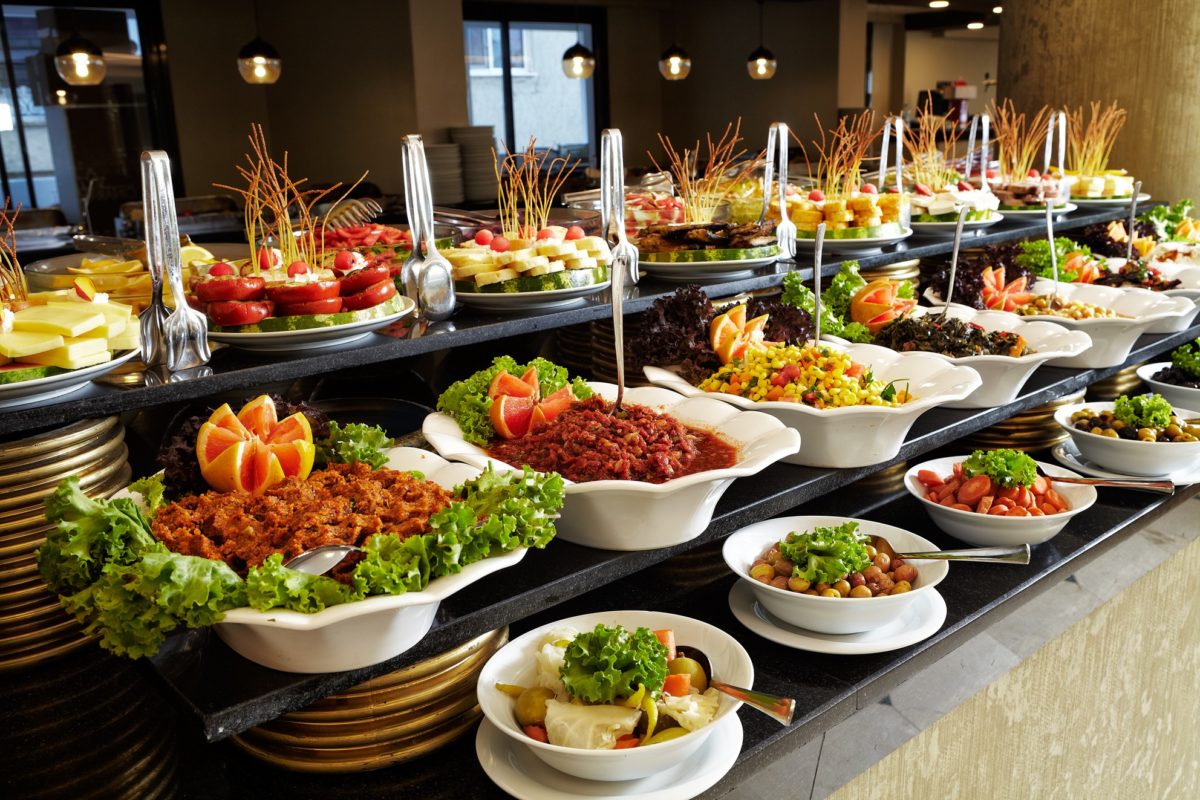
In shopping malls, one of the most common areas of complaint regarding air quality is the food court. Barbecue smoke, fried oil odors, spice vapors, the smoky scent of chicken döner… Each of them may be appetizing on its own, but when they mix in the same space, they create an unbearable combination.
This situation not only disturbs customers but also causes different restaurant brands to complain about each other, and even leads to conflicts between mall management and tenants.
So, which filtration systems should be used to prevent this chaos? Which technologies actually work?
Let’s take a closer look.
Main Causes of Odor Mixing
The primary reasons why odors mix in food courts are:
-
Restaurants sharing a common exhaust duct
-
Exhaust air being released without sufficient filtration
-
Imbalance between exhaust and fresh air
-
Lack of odor control systems such as electrostatic or carbon filters
-
Blocked or poorly maintained exhaust ducts
Unless these problems are solved, individual restaurant aromas are lost—everyone is affected by everyone else.
1. Basic Protection: Grease Filters (Pre-Filtration)
These filters capture grease particles and large pollutants generated during cooking. As a result:
-
The lifespan of electrostatic filters is extended
-
Fire risk is reduced
-
Exhaust ducts remain clean
However, these filters do not directly eliminate odors. They are only the first line of defense.
2. Effective Particle Removal: Electrostatic Precipitators (ESP)
During cooking, microscopic grease particles, soot, and smoke significantly increase odor intensity.
These particles remain suspended in the air and act as carriers for odor molecules.
With electrostatic filters:
-
Suspended particles are captured on high-voltage plates
-
Odor-carrying molecules are removed
-
Invisible yet noticeable smoke and soot are eliminated
Advantages:
-
High efficiency (captures particles as small as 0.01 microns)
-
Washable and reusable
-
Improves hygiene and supports odor removal
3. The Key Layer: Activated Carbon Filters (Odor Removal)
Volatile organic compounds (VOCs) and gases that cause odors exist not only in smoke but also in gaseous form. Activated carbon filters adsorb and trap these molecules.
-
Electrostatic filter → captures particles
-
Activated carbon filter → captures odors
Important notes:
-
Filter quality, carbon content, and pore density are critical
-
Becomes saturated over time → should be replaced every 3–6 months
-
Performance decreases under high heat or excessive humidity
4. Supporting Technologies: UV-C Lamps and Ozone Generators
In advanced ecology units, electrostatic and carbon filters are sometimes combined with UV-C or ozone.
-
UV-C lamps: break down microorganisms and organic odors
-
Ozone generators: oxidize odor molecules, but must be used under controlled conditions and by experts
Note: Ozone should not be used in occupied spaces. It is generally applied in ducts with controlled dosing.
5. The Best Approach: Modular Ecology Units per Restaurant
In modern malls, instead of a centralized filtration system, installing a separate ecology unit for each restaurant that connects to a shared exhaust duct gives the best results.
Such a unit includes:
-
Prefilter
-
Grease filter
-
Electrostatic filter
-
Ozone treatment
-
Activated carbon filter
-
Optional UV-C integration
This way, each restaurant’s cooking odor is treated individually. The shared duct only carries purified air, preventing odor mixing and complaints.
6. 5 Technical Tips to Improve System Performance
-
Choose filters based on cooking type (grilling ≠ frying).
-
Use sensors that alert when filters are saturated (ensures timely carbon replacement).
-
Design exhaust fan capacity to compensate for filter pressure losses.
-
Prevent positive pressure in ducts—otherwise, odors may backflow into restaurants.
-
Establish an annual maintenance plan → cleaning, measurements, and performance checks.
7. Odor Management = Tenant Satisfaction + Customer Comfort
-
Restaurants are not affected by each other’s odors
-
Customers smell only the food they ordered, not others
-
Mall management reduces complaints and increases brand value
-
Fire risks are minimized, filter systems last longer
-
Kitchen staff benefit from a healthier and more efficient work environment
When Odors Don’t Mix, Quality is Noticed
Odor mixing in food courts is not just a technical issue—it is a strategic mistake that directly impacts customer experience.
Without proper filtration, even the best restaurant risks delivering a poor dining experience.
Remember: A restaurant’s aroma is its signature. Protecting it is the responsibility of your filtration system.
İlker KURAN
Alperen Mühendislik Ltd. Şti.







